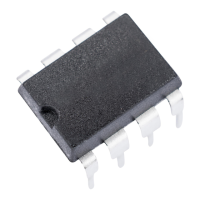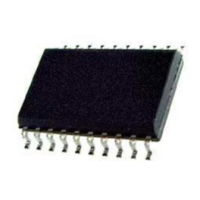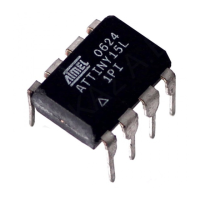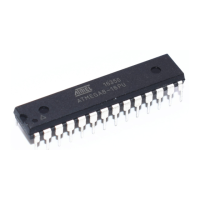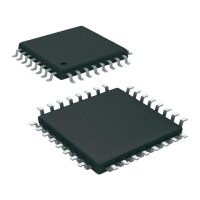241
7679H–CAN–08/08
AT90CAN32/64/128
19.4 CAN Channel
19.4.1 Configuration
The CAN channel can be in:
• Enabled mode
In this mode:
– the CAN channel (internal TxCAN & RxCAN) is enabled,
– the input clock is enabled.
• Standby mode
In standby mode:
– the transmitter constantly provides a recessive level (on internal TxCAN) and the
receiver is disabled,
– input clock is enabled,
– the registers and pages remain accessible.
• Listening mode
This mode is transparent for the CAN channel:
– enables a hardware loop back, internal TxCAN on internal RxCAN
– provides a recessive level on TXCAN output pin
– does not disable RXCAN input pin
– freezes TEC and REC error counters
Figure 19-6. Listening Mode
19.4.2 Bit Timing
FSM’s (Finite State Machine) of the CAN channel need to be synchronous to the time quantum.
So, the input clock for bit timing is the clock used into CAN channel FSM’s.
Field and segment abbreviations:
• BRP: Baud Rate Prescaler.
• TQ: Time Quantum (output of Baud Rate Prescaler).
• SYNS: SYNchronization Segment is 1 TQ long.
• PRS: PRopagation time Segment is programmable to be 1, 2, ..., 8 TQ long.
• PHS1: PHase Segment 1 is programmable to be 1, 2, ..., 8 TQ long.
• PHS2: PHase Segment 2 is programmable to be ≤ PHS1 and ≥ INFORMATION
PROCESSING TIME.
• INFORMATION PROCESSING TIME is 2 TQ.
• SJW: (Re) Synchronization Jump Width is programmable between 1 and min(4, PHS1).
1
0
PD5
TXCAN
PD6
RXCAN
internal
TxCAN
internal
RxCAN
LISTEN
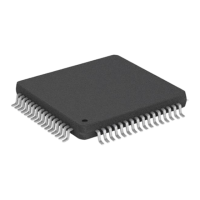
